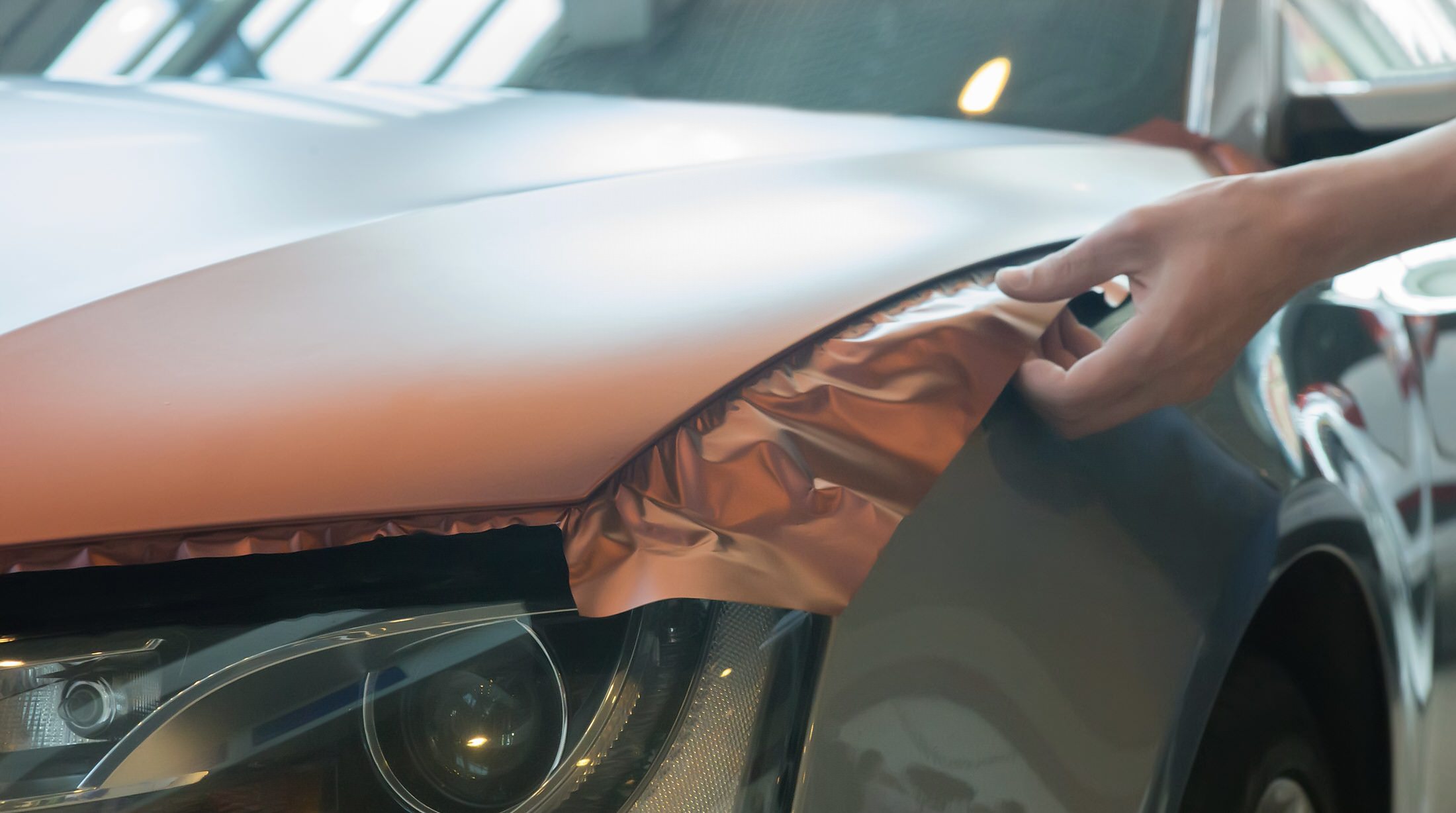
PPF and Wraps; What’s the Difference?
While the two technologies may seem similar, they are actually completely different things.
We often encounter customers that are confused about the differences between Paint Protection Film (PPF) and vinyl wraps. Many people think that PPF is simply a clear version of a vinyl wrap, when in fact, they are completely different products.
In a nutshell, vinyl wraps are primarily used to add custom style to a vehicle, while PPF is used exclusively for protection. Here are 6 ways that PPF and vinyl wraps are different from each other.
Material
PPF needs to be incredibly strong, flexible, and totally clear. Due to these requirements, polyurethane is the best material for PPF.
Vinyl wraps are made from polyvinyl chloride. When compared to PPF, vinyl wraps are actually quite brittle. The main advantages of polyvinyl chloride is that it can be dyed any imaginable colour, can have any finish (gloss, matte, reflective, etc.), and can be easily applied to any swoops or curves that may be present on your vehicle.
Thickness and Durability
In the world of automotive wraps and films, the unit used to measure thickness is the “mil”; 1mil = 1 thousandth of an inch (the name comes from the French “mille” for “one thousand”). A credit card is about 30mil thick, a piece of photo paper from a 1-hour photo developer is about 8.5mil, and a piece of newspaper is around 2.5-3.5mil.
The main quality that people desire from their PPF is resistance to impact and scratches, therefore PPF is typically thicker than vinyl wraps. Depending on which model and manufacturer of PPF you choose, it will typically range between 6mil to 10mil. An application of PPF to an entire vehicle could increase the weight by up to 10 pounds.
Vinyl wraps are much thinner than PPF. This is because of the different materials, and to save weight. As vinyl wraps are almost always applied to the entire car, the weight of the film is more of a factor than with PPF, which is typically only used on the vulnerable areas of the vehicle. A vinyl wrap used to cover an entire vehicle will probably weigh only 5 or 6 pounds.
Customization
With PPF, you get to choose where you apply the film, but aesthetically they are all the same – clear. Different films will be used to preserve the glossy or matte finishes of a car’s paint.
With vinyl wraps, your imagination is the limiting factor. With rare exceptions, vinyl wraps are applied to an entire vehicle but don’t have to be a uniform colour. You can use vinyl wraps to get custom designs or logos, and you can get any finish you could think of.
Installation Time and Maintenance
Having PPF installed on high-impact areas can be a same-day procedure, but many shops will ask that you leave your vehicle overnight. This is to help the technicians ensure a flawless application. We’ve been applying PPF to vehicles on Southern Vancouver Island for over 20 years – when you have any questions about PPF, you know who to call.
If you’re interested in getting the Island’s highest quality PPF installed on your vehicle, check out our services page to learn more about the different packages we have to offer, and read here to learn more about our industry-leading products.
Full vinyl wraps take more time, possibly resulting in you being without your baby for up to a week! The procedure is much more labour intensive than applying PPF.
After getting PPF or a vinyl wrap, you should clean your car like normal. Simply washing, drying, and waxing will keep the films healthy and looking great. Some PPF is “self-healing”, meaning that scuffs and scratches can be fixed with a small application of heat. Waxing vinyl wraps is especially important to keep the films hydrated and flexible, but isn’t required with PPF.
